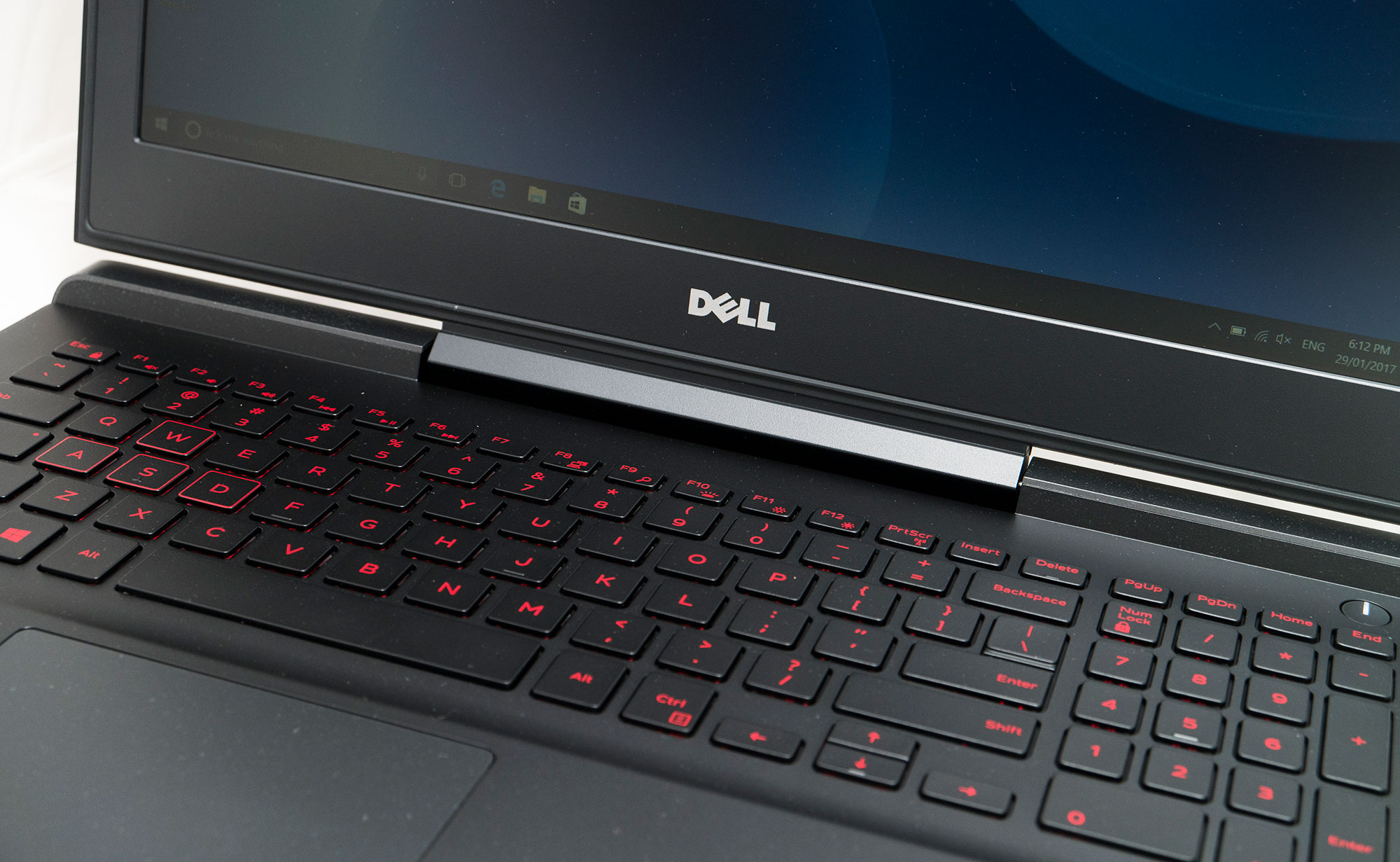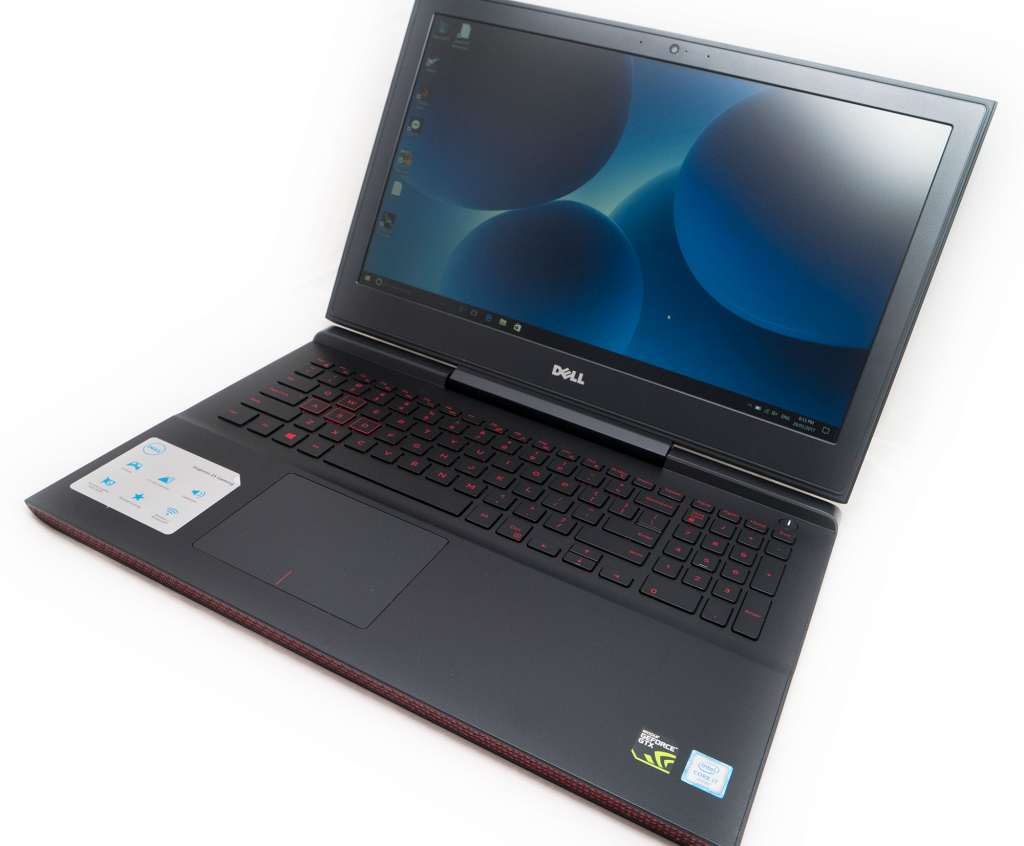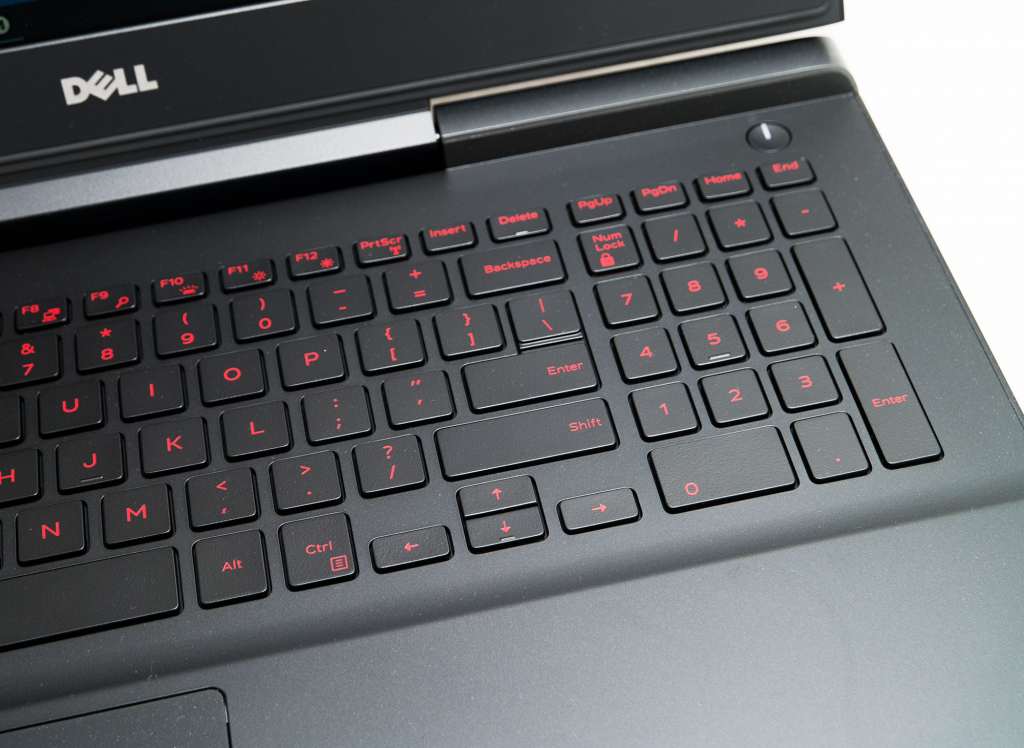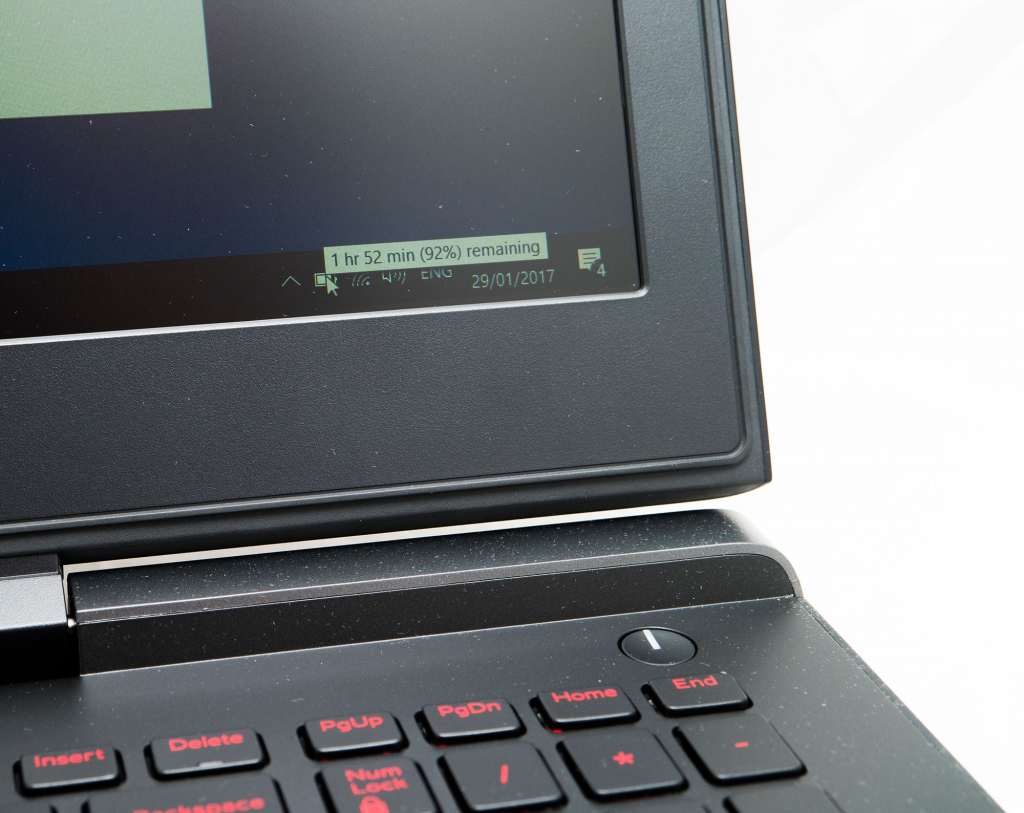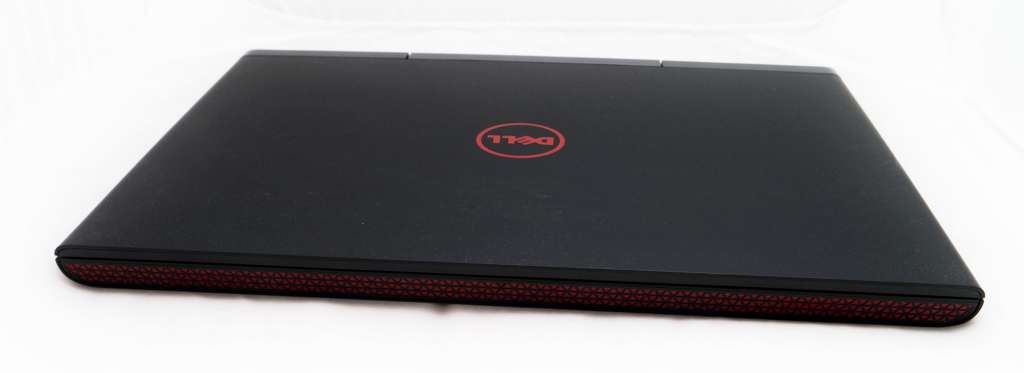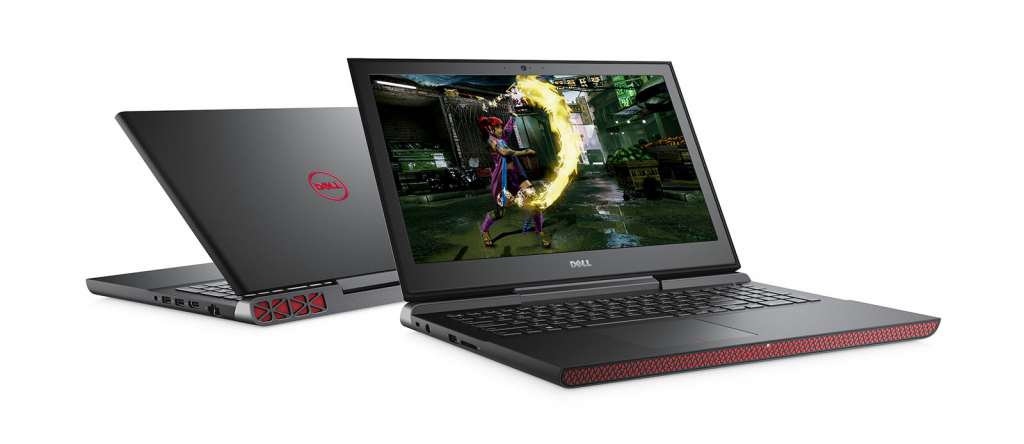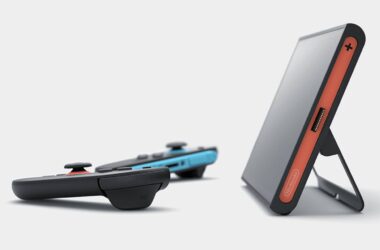Quick review
The good
The not-so-good
With PC gaming on the return, you’ll need a decent (and probably new) computer if you want to play. But everything is so expensive… or is it?
Dell’s 15 inch Inspiron for gaming could be the solution. Does it achieve enough for PC gamers without a heavy-handed price tag?
Design
Gaming laptops tend to offer a pretty specific look these days, with black or silver usually being embraced and hugged tight, with a few accents of red along the way, often glowing for dramatic effect. We’ve seen it on Alienware machines and those made by HP, and even Asus follows the same style (Razer does too, though replacing red with green).
Unsurprisingly, Dell is doing the exact same thing, because apparently black and red mean “gaming” these days, with the Inspiron 15 Gaming following that exact style.
Here, you’ll find a black plastic body with a few accents of dark grey, while a red-lettered keyboard glows scarlet when you power the computer on.
Features
Making the Dell Inspiron 7566 special is a set of specs that doesn’t completely read like a picture of today, but still aims to offer a good all-round gaming system for people on the go, skipping over Intel’s latest seventh-generation computer processors and instead sticking with the sixth-gen models, because they should be more than plenty for laptop gaming in this day and age.
As a result, expect to find an Intel Core i5 or i7 processor in this machine, paired with either 8GB or 16GB RAM, at least 1TB storage, and Nvidia’s GeForce GTX 960M with 4GB graphics. Interestingly, the graphics processor is one of the only pieces of hardware that is standard across the two Inspiron 15 Gaming variants, so depending on how much you want to spend — $1699 or $1999 — you’ll still get the same graphics performance.
Also shared across the variants is the cooling system, which uses a thermal cooling design that sends excess heat out the back away from you, using two fans to cut back on noise and temperature.
Our review model was the high-end variant, however, with a quad-core Intel Core i7 6700HQ, 16GB RAM, and dual storage spread across 128GB solid-state and 1TB on a conventional hard drive.
Regardless of the model you decide on, you won’t see any optical drive here, as keeping in line with modern computing, the Blu-ray drive for computers is nearly dead.

Connection options are pretty standard for a computer these days, with wireless offered through 802.11a/b/g/n/ac WiFi and Bluetooth 4.2, with the aforementioned ports handling the wired connectivity.
Then there’s the screen, and for that you’ll find a 15.6 inch Full HD 1920×1080 matte display with no support for touch. Above the screen sits a 720p HD webcam.
The keyboard is backlit and spill-resistant.
Performance
Grabbing the computer from its box and getting stuck into using it, you’ll find Windows 10 is ready on this machine out of the box, with 1TB of storage waiting for you to fill her up. Our review model arrived with an extra 128GB solid-state drive, and that’s what we turned to for getting games on the machine, simply because an SSD is almost always going to be faster than its hard drive counterpart.
Getting those games on will require time, a factor that needs to be considered in a world moving away from the optical drive, as the internet becomes the only way to install games at the moment.
Still, once it’s done, you get the opportunity to see the graphics fire up, and do so in a big way.
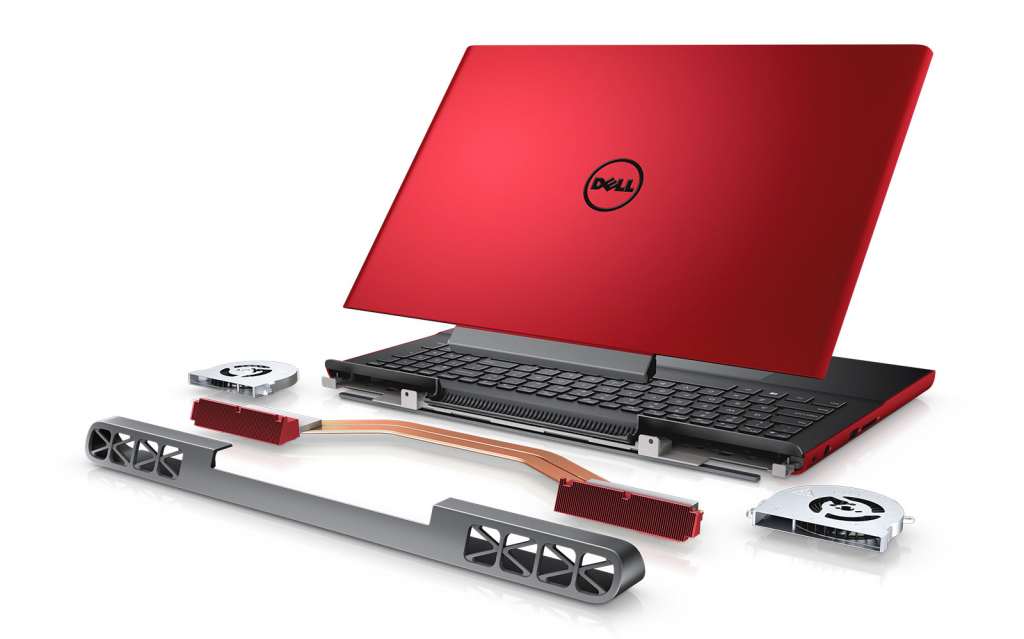
When the Inspiron Gaming has to work hard, it works hard, with a cooling system that fires up to keep the graphics running at a lower temperature making air blow out with noise, though not nearly as much as we expected.
You might expect it to sound like a light lawnmower or something close, and yet it just knows how to stay quiet, with Dell’s cooling system really blowing out the hot air but not blowing out your eardrums. Great work, Dell.
We do wish Dell had opted for some more impressive technology at the screen’s level, however, because with only the option of Full HD on a matte screen with no touch, you don’t feel like you’re getting something all that modern.
Not helping that 15 inch display is weaker than expected viewing angles, which look fine if you’re sitting on either side of a happy (or angry) gamer, but the moment you shift up and down in your position, you see colour wash out.
Excuse the pun, but colour us surprised that Dell hasn’t opted for a more vibrant display here, with what feels very much like a twisted nematic (TN) panel being used, likely to provide better gaming display rates, even though it feels like we should be seeing something positively more crisp, bright, and friendly.
Touch is also missing in action, one of those things Windows is less reliant on these days, but is still nice to have. Given the 2.62 kilogram weight, you probably won’t be using the Inspiron 7566 as a tablet any time soon, so we’re not too bothered, but if you were expecting to prod the screen with those digits, think again.
We’re also a little surprised not to see support for Intel’s RealSense camera, or even something like it, meaning this $2K machine will not deliver biometric login. That’s been around for a good year now (over, actually), and yet finding it in laptops appears to be something that’s few and far between. Sadly, Dell’s gaming Inspiron is yet another example of a machine over the $1500 mark that doesn’t have the facial login technology that makes Windows Hello work as well as it does.
At least you’ll be happy with the performance if you’re a gamer, because we found the guts handled quite well, delivering enough speed to fire up the Full HD display when we ran our tests through the laptop.
That’s the graphics accelerator in full swing doing much of the heavy lifting with Dell’s cooling system allowing the component to keep its temperatures down, which is handy since so many games these days will push these parts hard.
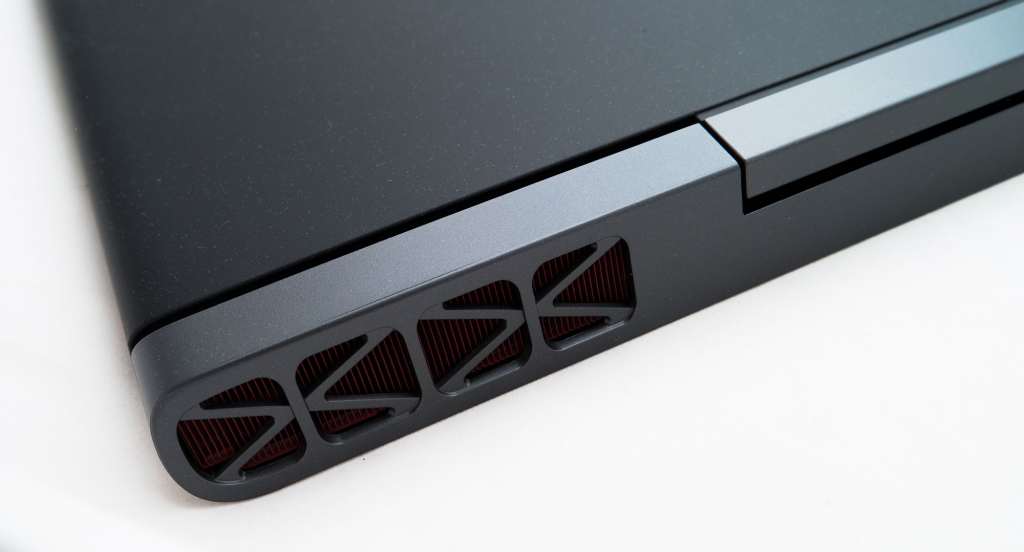
Keyboard and mouse
With solid efforts in the performance department, you’d hope that the keyboard and mouse live up to the same expectations. After all, these are the main ways you’ll be playing with the laptop, entering in data and going about using Windows.
In this area, it’s a little ho-hum, with a relatively strong keyboard, but a thoroughly weak touchpad mouse not exactly made for gaming.
Let’s start with that red-backlit keyboard first, because you’ll find a comfortable keyboard with a decent amount of travel, even if the margins could be a touch wide.
The backlighting is nice, even if the red glow makes things a little eerie when the lights go down. You’ll find only two levels of backlighting, by the way, with low, what constitutes “bright”, and then off.
Perhaps the nicest touch of the keyboard, however, is the inclusion of a numeric keypad. Remember when these were only found on 17 inch machines and higher? My how times change.
On the mouse side of things, it’s not that the touchpad Dell has used is too small, as that’s completely not it. Rather, it’s more that it lacks the responsiveness and feel, coming off as yet another plasticky touchpad that isn’t fun to use.
The button just doesn’t feel strong, and that sense of speed you might be looking for as you glide your finger around the surface just isn’t there, at least not for games, leaving you feeling like perhaps the mouse just wasn’t made for what the rest of the laptop is going to be used for.
We suppose that’s not a major deal if you bring your own external mouse, which in fairness a lot of gamers will do, but you might not have a dedicated gaming mouse, or more frustrating, you might actually want to use it to play games on the laptop.
In this area, you’ll struggle, and with no touchscreen to help things out, the news isn’t that much better.
Battery
Unfortunately, the battery doesn’t boost that news back in the “positive” area, because while gaming computers do tend to struggle with battery performance, Dell’s 15 inch gaming-specific Inspiron is one of those machines you won’t really want to do gaming on without a power plug nearby.
That’s because if you start up the graphics accelerator inside, things works a little harder, and while it doesn’t get all that toasty, it can get a little power-hungry, switching from a regular WiFi-only battery life of six hours back to a game-mode of closer to two, and just under.
We liken that to an OK performance for a standard laptop, but not a great one, while the gaming battery is acceptable, but not really mind-blowing.
Be sure to keep that charge pack with you, because if you go-a-gaming, you’re gonna need it.
Value
Despite the battery concerns, at $1999, Dell’s 15 inch gaming-grade Inspiron does a pretty solid job at providing a place for PC gamers to start their journey with the WASD keys, getting into the likes of action, adventure, RTS, first-person, and just about anything else that will render pixels to screen in a fantastic fiction.
Looking at the specs, it’s hard to complain, especially when you consider the cooling system on-board, and the fact that Dell tends to offer discounts here and there, so it probably won’t take much looking to find the laptop at a better price.
Viewing it in comparison with the competition (because that’s what Pickr was designed to do from the beginning), it’s a very similar laptop specification to other gaming laptops, including the $2499 Lenovo IdeaPad Y700 and the $2499 HP Omen 15 which both offer close (if not identical) hardware for more money.
If anything, the best competition for Dell actually comes from a company Dell owns, with Alienware offering great alternatives for a good $400-700 more that bring the newest Intel processors (7th generation) and the latest Nvidia graphics chip (1060), which come together to make a properly virtual reality ready computer.
That’s the thing worth noting about the Dell Inspiron 15 Gaming, because while it might seem VR ready, it could certainly handle virtual reality, but it’s not technically “VR ready”, so to speak. For that, you’ll need a newer computer, or possibly next year’s version of the Dell.
This year’s doesn’t formally do it, but it should work with virtual reality headsets, provided you’ve ponied up the cashflow needed for one in the first place.
Final thoughts (TLDR)
Buying a gaming computer isn’t easy for the first timer, what with the knowledge of graphics cards, of processors, of memory and storage and needing to know how much power you actually need versus want, but Dell’s 15 inch Gaming Inspiron finds a nice starting point for those who want a laptop to do their gaming on, but don’t want to fork out an arm and a leg.
Given the price tag, it’s not a bad system at all, and unless you were willing to spend a good $500 more, Dell’s Inspiron serves as a great way to get into the world of PC gaming.
It isn’t, however, a starting point for VR, or not a great one. You’ll get some games to work, and we imagine TiltBrush will play here and maybe a few other small VR titles, but not much else given it’s just a little below where the graphics need to be for the next year or two.
That means if you’re getting into gaming specifically for VR, you’ll want to definitely spend the extra $500 to $1000 specifically on a computer made for VR, which will go nicely with your expensive VR headset, we suspect.
For anyone just wanting to play games, they’ll find that here, though make sure to bring that power brick, because with only two hours of battery life for gaming, you won’t be doing too much before it runs out.


